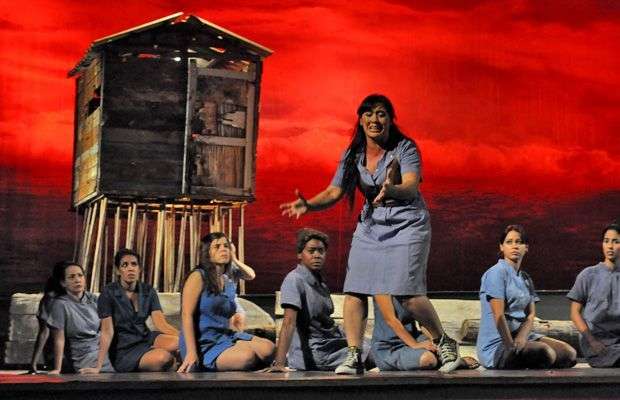The National Lyric Theater of Cuba presented this weekend an opera by Richard Wagner: The Flying Dutchman. It would not be great news if it were not the first staging of a work of this giant on the island. Seldom someone has sung or played scores of Wagner in Cuba; it was a cherished dream. Accustomed as we are to the Italian and French sounds, it came in very handy this powerful foray into the German school. But Wagner, everybody knows that, is a very complex subject, especially for those who have no tradition of assuming him.
The Symphony Orchestra of the Gran Teatro de La Habana, under the baton of the young company’s director Eduardo Diaz, strove to interpret the music. Not that they were wrong, but one expects a much stronger symphonic body. In this section, they did what they could, but the chorus itself should have worked a little more, sometimes it did not look comfortable, as passages were too much for them.
Fortunately the characters were more convincing, especially the Ukrainian baritone Andrei Maslakov , who has lots of experience in these conflicts . His confidence was well supported by Johana Simon and Yuri Hernandez, Cuban singers who were undaunted before the challenge.
But best of this version (a Cuban, Austrian and German coproduction) has been its visual effects. Particularly notable are the set designs of the second act, the responsibility of the Austrian Harald Thor in collaboration with Cuban artist Kcho . If you add the lighting design they achieved one of the most beautiful plastic lattices Cuban scene in recent years. A work of art, no doubt.
The staging of Andreas Baesler may seem iconoclastic for lovers of tradition, but to this writer it seemed pretty consistent. Although some aspects of that upgrade to the death of the argument were a bit forced.
Anyway, it was a good season. Too bad it will not fill the Avellaneda room at the National Theatre.










